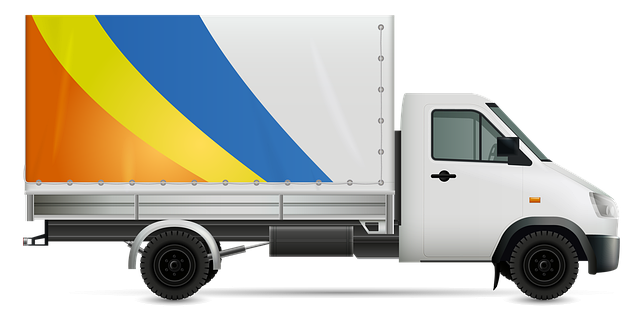Physical damage coverage is essential for fleet truck operators, protecting against accidents, theft, vandalism, and natural disasters. Small fleet owners can access affordable, customizable plans to manage repair costs. Balancing collision and comprehensive insurance based on fleet risk factors ensures cost-effective protection without compromising financial stability. Tailored trucking fleet insurance policies offer a mix of coverage types to meet unique operational needs while keeping expenses manageable.
In today’s bustling transportation industry, balancing physical damage premiums with coverage needs is crucial for fleet managers. This article provides professional tips to navigate the complex landscape of truck repair insurance and fleet vehicle protection. From understanding physical damage coverage for fleet trucks to finding affordable yet effective small fleet damage policies, we explore strategies for optimizing collision and comprehensive fleet coverage. Discover how to ensure your trucking fleet is adequately insured without compromising on cost-effectiveness.
Understanding Physical Damage Coverage for Fleet Trucks

Physical damage coverage is a critical component of insurance for fleet truck operators. It protects against the financial burden of repairing or replacing vehicles involved in accidents, which can be particularly costly due to the specialized nature and high value of trucks. This type of coverage includes protection against collision-related damages, such as crashes with other vehicles, objects, or even rolling over. It also extends to comprehensive damage, encompassing incidents like theft, vandalism, natural disasters, and severe weather conditions that might impact fleet vehicles while parked or in transit.
For fleet owners managing a small number of trucks, choosing the right physical damage plan is essential for balancing cost-effectiveness with adequate protection. Affordable physical damage policies tailored for fleets offer flexible options, allowing business owners to select coverage levels aligned with their specific needs and budgets. These plans often include features like collision deductibles, comprehensive limits, and towing coverage, ensuring fleet vehicles receive the necessary care and support in the event of damage while maintaining financial security for businesses operating trucking fleets.
Assessing Truck Repair Insurance Needs

When managing a trucking fleet, assessing repair insurance needs for physical damage is a strategic process that goes beyond simply finding the cheapest plan. It involves understanding your fleet’s unique risks and coverage requirements to ensure comprehensive protection without overpaying. Consider factors such as vehicle age, usage patterns, driving conditions, and historical maintenance records to determine the most suitable level of collision and comprehensive coverage.
Focus on locating affordable physical damage plans that align with your fleet’s specific needs. Explore options for small fleet damage policies that offer tailored coverage at competitive rates. Compare quotes from various insurers, examining the scope of their collision coverage for fleets and any additional perks or discounts available. Remember, the goal is to find a balance between managing costs and ensuring adequate truck repair insurance to safeguard against unexpected physical damage claims.
Balancing Collision and Comprehensive Fleet Coverage

When managing a fleet of trucks, balancing collision and comprehensive coverage is crucial for maintaining operational efficiency and financial stability. While collision coverage protects against damages resulting from accidents, comprehensive insurance provides protection for various other risks like theft, natural disasters, and vandalism. For small fleets, affordable physical damage plans that offer a mix of these coverages can be highly beneficial. This dual protection ensures that unexpected events won’t cripple your trucking operations or lead to significant financial losses.
Choosing the right balance involves assessing risk factors specific to your fleet’s usage patterns and geographical location. Consult with insurance professionals who specialize in trucking fleet insurance to tailor a policy that offers adequate collision coverage for high-risk scenarios while not overspending on comprehensive protection for areas with lower theft or natural disaster rates. Such strategic planning ensures your vehicles are protected without breaking the bank, ultimately contributing to a more robust and cost-effective fleet management strategy.
Finding Affordable yet Effective Small Fleet Damage Policies

When managing a small fleet of trucks, finding the right balance between cost-effectiveness and comprehensive coverage is essential for business continuity. Affordable physical damage plans specifically tailored for fleets offer a practical solution without compromising on protection. These policies cater to the unique needs of trucking operations, ensuring that unexpected repairs due to collisions or other incidents don’t strain the company’s budget.
By opting for collision coverage for fleets and comprehensive fleet insurance, businesses can safeguard their vehicles and minimize financial losses. Small fleet damage policies typically include deductibles and coverage limits that align with the average repair costs of commercial trucks, making them a smart choice for cost-conscious fleet managers. This proactive approach to truck repair insurance enables operators to focus on road safety and efficiency rather than being burdened by excessive insurance expenses.
When balancing physical damage premiums with coverage needs for your fleet trucks, a thorough understanding of each aspect is key. By assessing truck repair insurance requirements and exploring options like collision and comprehensive coverage, you can find the perfect blend of protection and affordability. Specifically, small fleet damage policies offer effective solutions without breaking the bank. Remember that the right trucking fleet insurance should protect your vehicles while aligning with your budget, ensuring your business navigates the road ahead smoothly.
